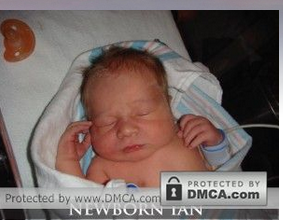 Scott and I felt it was time to share the life of our precious son with everyone. It is unfortunate so few of our family and friends were able to meet our “lil’ sunshine”. We hope he is able to touch your life in some way. It is difficult to describe your child in only several words, but those that come to mind for Scott and me are “fighter”, “resilient” and “patient”. Ian endured more in his 47 days of life than most do in a lifetime. His spirit was beyond amazing. He would not give up. I recently had lunch with one of Ian’s occupational therapists who gave him edema massages daily. Chris described Ian as a “gentle and calming soul.” We were told time and time again by all the doctors at
Scott and I felt it was time to share the life of our precious son with everyone. It is unfortunate so few of our family and friends were able to meet our “lil’ sunshine”. We hope he is able to touch your life in some way. It is difficult to describe your child in only several words, but those that come to mind for Scott and me are “fighter”, “resilient” and “patient”. Ian endured more in his 47 days of life than most do in a lifetime. His spirit was beyond amazing. He would not give up. I recently had lunch with one of Ian’s occupational therapists who gave him edema massages daily. Chris described Ian as a “gentle and calming soul.” We were told time and time again by all the doctors at
Children’s Hospital that Ian defied everything they knew and that they couldn’t believe he was hanging on like he did. Ian fought harder than any human being I have ever met. He must have gotten that from Daddy. He is now in heaven with his Grandpa Ken and from there he watches over us.
Scott and I documented Ian’s life through photos for medical purposes. A photo was taken almost daily to show the doctors his ever changing rashes and body. Now, the photos can be used to show his journey and help educate the world. Although always in our mind and spirit, the photos help us remember what true pain he endured and what a fighter we were given.
Day 1 June 25
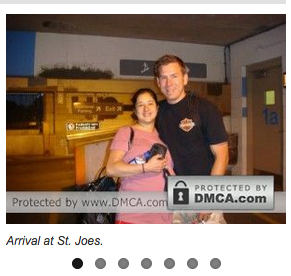 I was induced two and a half weeks early due to toxemia and preeclampsia. Ian’s due date was July 10, 2007. Scott, my mom and I went to St. Joseph’s Regional Medical Center June 25 at 5:00 am. Ian was born at 3:36 pm at eight pounds 1.5 ounces and 20 ½ inches tall. What a big boy!Wow, was that a day! My mom and Scott were my support. Both of them were amazing!! After my water was surgically broken at about 7:30 am, the nurses indicated there was meconium in the amniotic fluid. As they were concerned about meconium aspiration (MAS), the NICU was notified to be present at the birth. MAS is the inhalation by an infant of a mixture of meconium and amniotic fluid, and can happen before, during, or after labor and delivery. Meconium is the baby’s first stool, and is sticky, thick, and dark green. It is typically passed in the womb during early pregnancy and again in the first few days after birth. The inhaled meconium can partially or completely block the baby’s airway. Although air can flow past the meconium in the baby’s airway as the baby breathes in, it becomes trapped in the airway when the baby breathes out. Thus, the inhaled meconium irritates the baby’s airway and makes it difficult to breathe. MAS is very common. In the worst case scenario the baby stays in the NICU for maybe two to three weeks while the meconium clears from the lungs.
I was induced two and a half weeks early due to toxemia and preeclampsia. Ian’s due date was July 10, 2007. Scott, my mom and I went to St. Joseph’s Regional Medical Center June 25 at 5:00 am. Ian was born at 3:36 pm at eight pounds 1.5 ounces and 20 ½ inches tall. What a big boy!Wow, was that a day! My mom and Scott were my support. Both of them were amazing!! After my water was surgically broken at about 7:30 am, the nurses indicated there was meconium in the amniotic fluid. As they were concerned about meconium aspiration (MAS), the NICU was notified to be present at the birth. MAS is the inhalation by an infant of a mixture of meconium and amniotic fluid, and can happen before, during, or after labor and delivery. Meconium is the baby’s first stool, and is sticky, thick, and dark green. It is typically passed in the womb during early pregnancy and again in the first few days after birth. The inhaled meconium can partially or completely block the baby’s airway. Although air can flow past the meconium in the baby’s airway as the baby breathes in, it becomes trapped in the airway when the baby breathes out. Thus, the inhaled meconium irritates the baby’s airway and makes it difficult to breathe. MAS is very common. In the worst case scenario the baby stays in the NICU for maybe two to three weeks while the meconium clears from the lungs.
I had an epidural and everything was smooth sailing. Before we knew it, Ian was born completely healthy. Auntie Missy was the first visitor in the delivery room. Ian was weighed, washed up, wrapped and given to Scott and me. I was then transferred to my room and Ian went with the nurses. When we got to our room I could immediately tell the nurses were concerned about Ian. They were in the room simply to give him a bath and to take his vitals, but soon they were saying he had a fever and would need to be taken to the neonatal intensive care unit (NICU) for an assessment. Oh no! As a mom, I didn’t want my baby anywhere but with Scott and me. I was worried sick, but Scott was there to comfort me. Several hours later a NICU MD came to our room. He indicated that Ian did in fact have MAS and that additionally he was a bit tachypnic (rapid breathing) and had a fever. Again, this is very common. We were told not to worry and that I should get some rest and that we could visit him first thing and in the morning.
Day 2 June 26
Scott and I awoke and immediately headed down to the NICU. I was not happy upon our arrival to find Ian in an incubator. It is a worst nightmare to see your child in one of those things. We also watched as the nurses gavage fed him, meaning a tube was inserted through his mouth and down his throat into his stomach, through which they would send formula. I thought that was the worst thing Ian could ever go through. Boy was I wrong. Scott and I stayed there with Ian the entire day. The doctor on rotation said he was confident Ian would be discharged that day. Sure enough, as Scott and I waited in my room, Ian was rolled in. We were so excited!
We had lots of visitors that day. Mommy instinct told me something was still not right with Ian, however. After everyone left, Scott and I called the nurse. Ian seemed to be wincing as though in pain. To our dismay, the nurse said he needed to be taken back to the NICU. Scott and I spent the evening there in the NICU. We couldn’t sleep, so we waited in anticipation late through the night into early morning.
Day 3-6 June 27-30
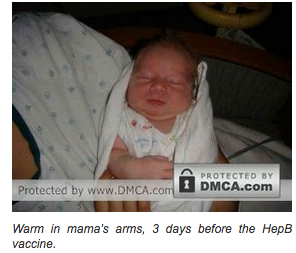 We followed much the same routine for the next several days. On the third day, St. Joe’s was kind enough to let me stay in my room an extra night. Scott and I spent every waking moment in the NICU; however. I was breastfeeding when Ian was able. When his breathing was not well, he was either gavage fed or we would give him a bottle.
We followed much the same routine for the next several days. On the third day, St. Joe’s was kind enough to let me stay in my room an extra night. Scott and I spent every waking moment in the NICU; however. I was breastfeeding when Ian was able. When his breathing was not well, he was either gavage fed or we would give him a bottle.
After the third day, we were able to stay in a family room down the hall form the NICU, as we weren’t going home without our baby boy! There was not one moment I left his side, unless I was eating or using the restroom. We read books to Ian, rocked him, changed his diapers, and bathed him. We were there for every single feeding. In the wee hours of the night and morning the nurses would call our room.
We would cruise down the hall in our pajamas to see and feed our handsome boy. While visits in the NICU were limited, we did have a few. Our parents were there every single day, for example.
We were set to close on a home at this same time. Our mortgage broker sent a representative to the hospital so I could sign over power-of-attorney rights to Scott. Scott was left to close by himself. This was supposed to be such a happy day. We were buying this house for Ian to grow up in, and neither Ian nor I were able to be there. This was very sad, but Ian and I were able to spend some quality mom and son time together at the hospital while daddy took care of our new house.
Scott and I hounded the doctors every day. We wanted as much information as possible. We asked more and more questions. We didn’t understand why Ian was still there. We learned quickly our constant questions were not always welcome. We asked anyway.
We followed much the same routine for the next several days. On the third day, St. Joe’s was kind enough to let me stay in my room an extra night. Scott and I spent every waking moment in the NICU; however. I was breastfeeding when Ian was able. When his breathing was not well, he was either gavage fed or we would give him a bottle.
After the third day, we were able to stay in a family room down the hall form the NICU, as we weren’t going home without our baby boy! There was not one moment I left his side, unless I was eating or using the restroom. We read books to Ian, rocked him, changed his diapers, and bathed him. We were there for every single feeding. In the wee hours of the night and morning the nurses would call our room.
We would cruise down the hall in our pajamas to see and feed our handsome boy. While visits in the NICU were limited, we did have a few. Our parents were there every single day, for example.
We were set to close on a home at this same time. Our mortgage broker sent a representative to the hospital so I could sign over power-of-attorney rights to Scott. Scott was left to close by himself. This was supposed to be such a happy day. We were buying this house for Ian to grow up in, and neither Ian nor I were able to be there. This was very sad, but Ian and I were able to spend some quality mom and son time together at the hospital while daddy took care of our new house.
Scott and I hounded the doctors every day. We wanted as much information as possible. We asked more and more questions. We didn’t understand why Ian was still there. We learned quickly our constant questions were not always welcome. We asked anyway.
Day 7 July 1
Finally! The nurses at St. Joe’s indicated that the doctors felt Ian was okay to go home the next day! Just two things needed to be completed before he could be released. He needed to pass his hearing test and receive his hepatitis B vaccination. I blame myself here as a mother for not having been completely educated on vaccines.
Fact: It is suggested that infants get the hepatitis B shot before they leave the hospital. It is not required. Fact: You can work out your own vaccination schedule and guidelines with your pediatrician. Fact: Drug companies have certain vaccines with fewer additives and in single doses, consult your pediatrician’s office regarding their ordering. It is your child’s life, it is your right to know. (Additional info)
Fact: An infant’s immune system is very weak at birth. The hepatitis B vaccine can cause serious reactions if the system is already compromised, as was Ian’s.
Ian received his shot. By that evening his fatal allergic reaction had begun. Every doctor and nurse at St. Joe’s conveyed the very same message: Ian’s reaction could absolutely not be from the vaccine. “Vaccines cannot cause this.” “Mom, all babies get rashes and the vaccination cannot cause a rash of this nature.”
Now, if we would have been provided the Vaccine Information Sheet (VIS) dated 7/11/01 as law requires, we would have known that “serious allergic reaction (very rare)” to the vaccine is possible. Incredibly, during the short time between Ian’s birth and death, a new VIS for the hepatitis B vaccine was released on 7/18/07 for the first time in seven years that better clarifies that “Severe problems are extremely rare. Severe allergic reactions are believed to occur about once in 1.1 million doses. A vaccine, like any medicine, could cause a serious reaction. But the risk of a vaccine causing serious harm, or death, is extremely small.”
Shouldn’t the doctors and nurses at St. Joe’s be aware that even the CDC’s vaccine information sheet advises severe allergic reaction to the hepatitis B vaccine are possible? If they are not, then how can they know to consider the vaccine as a possible cause when there is a reaction? Is it really possible that that not one doctor or nurse who saw our son knew what is clearly indicated on the vaccine information sheet? My son proved to us that a reaction to the hepatitis B vaccine can happen. Since that time, we have learned that it happens more often than is reported.
The VIS indicates that if a child has an adverse reaction parents should, “Ask your doctor, nurse, or health department to report the reaction by filing a Vaccine Adverse Event Reporting System (VAERS) form.” The VIS implies that it is the parent’s job to ask their healthcare provider to report the reaction. This may be due to the fact that it is common knowledge that where parents do not specifically push for the severe reactions to be reported, the reports are largely unmade. Shouldn’t it be automatic that medical professionals report adverse reactions? How is it otherwise possible that reporting from VAERS would even come close to representing accurate numbers? One of Ian’s neonatologists at Children’s Hospital of Wisconsin did report Ian’s case to VAERS. She also wanted to document Ian’s life in a case study for the Journal of American Academy of Pediatrics. Children’s Hospital prohibited her from doing this.
Writing this story has been very difficult. Some days I would only get a sentence in before I would start crying and stop. If I would have finished this story before January 15, 2008 when we learned more about the hepatitis B vaccine, our newfound knowledge would not have been part of Ian’s life story. I would have said this incident was a medical phenomenon, as we did not have the information we have now.
My father-in-law Larry said all along the cause was the hepatitis B shot. Scott and I knew the same and kept telling the doctors at St. Joe’s this. No one listened. Later, when we were at Children’s Hospital, nearly a dozen specialists saw Ian. All said about the same thing, “Something insulted his system, but it was not due to my specialty.” No one could figure out what was doing the insulting. Again and again we suggested the vaccination as the cause. We were told each time it was impossible. He was poked, prodded and tested for the rarest of rare diseases, yet the vaccination explanation would not be considered. We could not figure out why not. While Scott and I insisted it was the hepatitis B vaccine, we were continually told that this was not possible. You be the judge, after you read the facts and see the pictures.
Day 8 July 2
 Ian passed away in August 2007. In October of that year, Scott and I asked Ian’s neonatologist at Children’s Hospital to write the federal government to see if there were any cases similar to Ian’s. In January 2008, much to the astonishment of Ian’s neonatologist and the entire Neonatology Board at Children’s Hospital, a CD from the Center for Disease Control (CDC) arrived indicating that there were “several” (which means hundreds) reported cases exactly like Ian’s; cases in which infants became ill within 24 hours of receiving the hepatitis B shot and then passed away. These are just the self-reported cases. What about those cases that have gone unreported?
Ian passed away in August 2007. In October of that year, Scott and I asked Ian’s neonatologist at Children’s Hospital to write the federal government to see if there were any cases similar to Ian’s. In January 2008, much to the astonishment of Ian’s neonatologist and the entire Neonatology Board at Children’s Hospital, a CD from the Center for Disease Control (CDC) arrived indicating that there were “several” (which means hundreds) reported cases exactly like Ian’s; cases in which infants became ill within 24 hours of receiving the hepatitis B shot and then passed away. These are just the self-reported cases. What about those cases that have gone unreported?
Fact: After receiving the hepatitis B shot these symptoms appeared within hours: Platelet count dropped from 248,000 to 131,000, a rash appeared, seizure-like posturing noted, irritable, non-stop crying, stopped eating, and viral-like symptoms.
Day 9-10 July 3-4
Day 11 July 5
Day 12-15 July 6-9
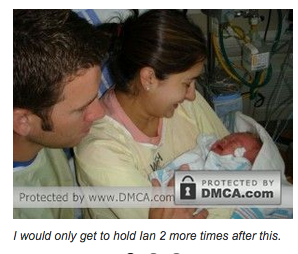 Ian repeatedly stopped breathing. I was a nervous wreck. Watching your child struggle to breath is something no parent should ever have to endure. I stared at the monitors and literally jumped out of my seat each time the levels started to drop drastically.
Ian repeatedly stopped breathing. I was a nervous wreck. Watching your child struggle to breath is something no parent should ever have to endure. I stared at the monitors and literally jumped out of my seat each time the levels started to drop drastically.
Eventually his breathing crashed altogether, resulting in his intubation. He became very edematous, meaning that he was filled with fluid.
On July 8th I was able to hold Ian for a couple of minutes. To just have him in my arms meant more to me than anything else ever has or ever will. He was baptized on July 9th. That same day, Scott and I decided to have Ian transported to Children’s Hospital. They were unsure whether Ian would even survive the transport, making this the hardest decision Scott and I have ever made in either of our lives.
Day 16 July 10
Day 17-29 July 11-23
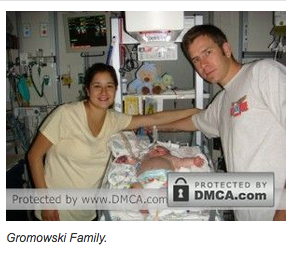 Every single specialist at Children’s Hosptital saw Ian, from departments that included Dermatology, Rheumatology, Nephrology, Immunology, Hematology, and Infectious Diseases. The list goes on and on. He was tested for diseases that occur in one or two infants in the world per year.
Every single specialist at Children’s Hosptital saw Ian, from departments that included Dermatology, Rheumatology, Nephrology, Immunology, Hematology, and Infectious Diseases. The list goes on and on. He was tested for diseases that occur in one or two infants in the world per year.
No one could determine what was wrong with our son. No one would consider the hepatitis B vaccine explanation, though. Worse yet, Scott and I later learned there is no cure for an allergic reaction to the hepatitis B vaccine anyway. Ian received at least four blood transfusions, or platelets, per day. His platelet count remained low. He had rash after rash, as he was allergic to some antibiotics. Through it all, Ian remained such a peaceful, strong boy.
He made us proud to be his parents. Scott and I slept at Children’s Hospital and never went home. We were fortunate to have great friends and wonderful family move us from our house in Milwaukee to our new home in Brookfield. I am forever indebted to all of you.
Day 30 July 24
Day 31-36 July 30-25
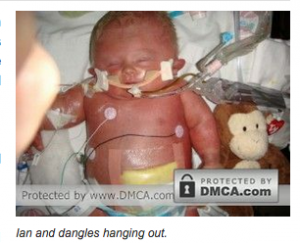 After some time, his kidneys started to work on their own! Success! When all the extra fluid was out of his belly; however, we realized his liver was quite swollen. You could actually see it protruding from his belly. While partially damaged, his liver had started to heal itself. Scott and I felt that all the medications were slowly destroying his little body.
After some time, his kidneys started to work on their own! Success! When all the extra fluid was out of his belly; however, we realized his liver was quite swollen. You could actually see it protruding from his belly. While partially damaged, his liver had started to heal itself. Scott and I felt that all the medications were slowly destroying his little body.
We requested he be taken off all but pain medication.
Day by day, Ian was slowly looking better. He started to open his eyes, and he moved around a lot more!
Scott and I went home for the first time to sleep the night.
I cried the whole way home because it was the first time in Ian’s life that I was spending the night away from him.
Day 37 July 31
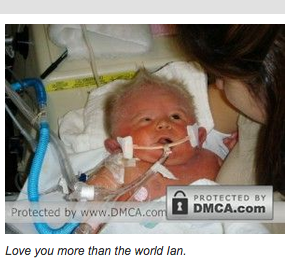 This was the last time I was able to hold Ian. I held him for two hours. Ian fell asleep in my arms. While most mothers take this gesture for granted, I will hold this particular memory in my heart forever. My son looked me in the eyes and fell asleep in the comfort and warmth of my arms. Nothing could ever replace that feeling.
This was the last time I was able to hold Ian. I held him for two hours. Ian fell asleep in my arms. While most mothers take this gesture for granted, I will hold this particular memory in my heart forever. My son looked me in the eyes and fell asleep in the comfort and warmth of my arms. Nothing could ever replace that feeling.
August did not prove to be a very kind month for Ian. Right after these pictures were taken, Ian took a turn for the worse. During his third bone marrow biopsy, he was accidentally given the antibiotics to which he was allergic. He became sicker, then sicker yet.
He was transferred into isolation because his white blood cells were near zero, putting him at a severely high risk of getting an infection with nothing to fight it off.
Day 38-46 August 1-9
At the same time, on August 6th my grandmother passed away in Colorado. I forced my mother to go to the funeral despite her arguments, so that she could be there with her brothers and sisters. They flew out on August 7th.
In the end, she ended up missing the funeral, instead taking the first flight back home on August 9th at hearing of Ian’s present condition. This was an extraordinarily difficult time for our family.
On August 9th we had a “Care Conference” with all of Ian’s physicians. They told us that after his third bone marrow biopsy, they found that Ian was not producing any platelets, white blood cells, or red blood cells in his blood.
Their analogy was this: The typical person’s blood can be compared to Lambeau field during a Packer game. If you stand in the middle of the field, you see a sea of yellow, green, and white colors from the fans (representing platelets and red and white blood cells). Ian’s Lambeau field had no fans.
We decided to put Ian on the bone marrow transplant list with hopes of his being able to get a match ASAP. That was apparently not meant to be. After we left the meeting, we learned that Ian’s saturation rates for breathing were at 60%. It should have been at 100%. Ian’s little body was giving up on him. He just couldn’t hang on anymore. Our little fighter had fought his last fight.
Day 47 August 10
At approximately 1:00 am, Ian Larsen Gromowski went to heaven to meet his Grandpa Ken.
No words exist to express how Scott and I felt then, feel now, or will feel for the rest of our lives. We had a son who died after just 47 days of life and who suffered tremendously. To say we miss and love him beyond belief does not even begin to do our feelings justice. Life has changed greatly for us. We are changed people. No one and no child will ever replace our precious “lil’ sunshine” Ian.
